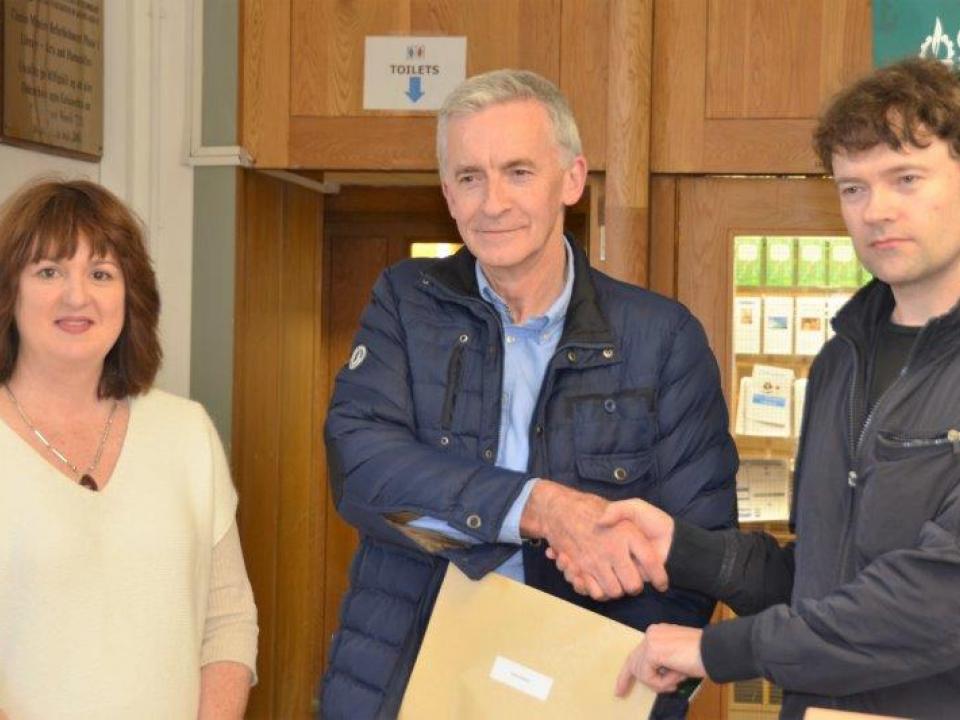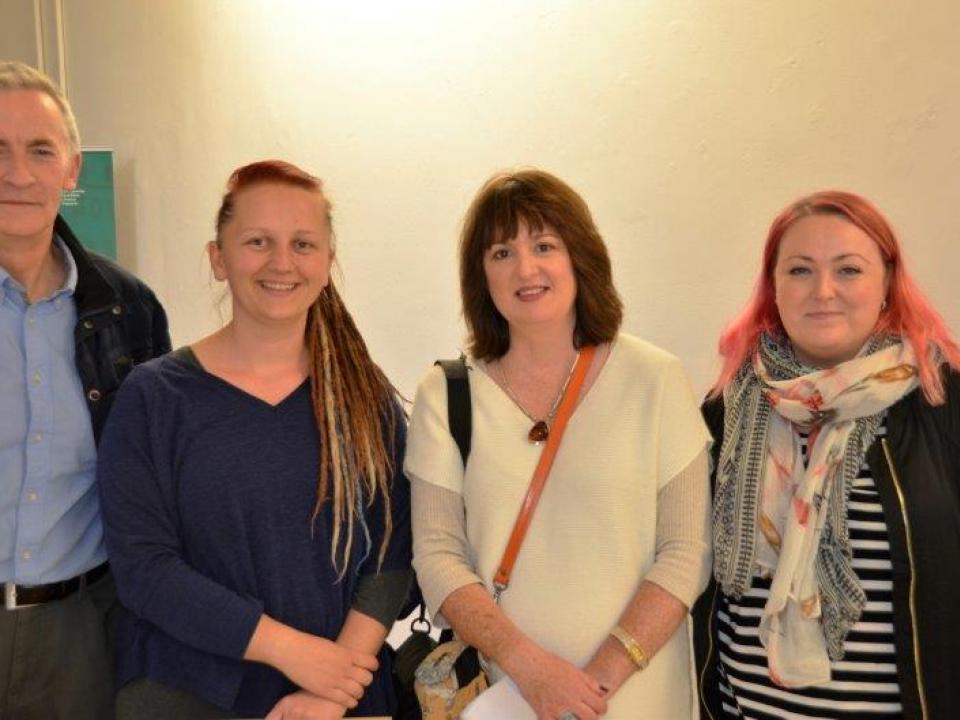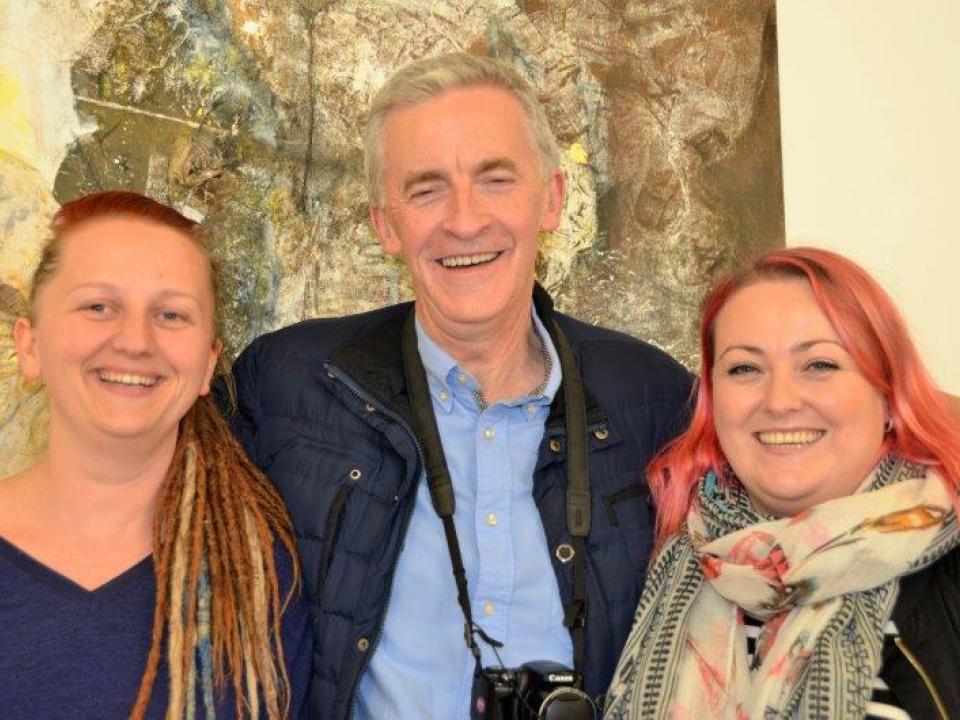GMIT awards prizes for 1916 themed art competition & exhibition
Penumbra: Ireland 1916-2016…’ ‘Solas agus Scáth: Éire 1916-2016…’
As part of GMIT’s 1916 commemorations, the Institute awarded three €500 prizes to the winners of an Institute-wide Art & Design Competition, the works of which were shown at a special exhibition in GMIT’s Centre for Creative Arts & Media (CCAM) last week. The €500 prizes were awarded to the winners Hugh Murphy, Lisa McClurg and Sara Buciak.
The curatorial theme “Penumbra: Ireland 1916-2016…’ ‘Solas agus Scáth: Éire 1916-2016…’, co-ordinated by lecturers Marion McEnroy and Austin Ivers, attracted entries from students across all campuses including the Mayo campus (Castlebar), Letterfrack and the two Galway city campuses.
“The competition aimed to evoke the shrouding or partial illumination of contemporary interpretations and understanding of the complex events and actions that happened in Ireland in 1916 and their significance for Ireland to 2016 and beyond,” explains Marion McEnroy. “Penumbra / Solas agus Scáth’ pertains to light and the shadows it casts; time, vision, causality and consequence as a metaphor for historic events and their aftermath.”
Selected entries included fine art, design and creative writing by students Verena Berard, Sara Buciak, Jude Eoghan Danagher, Kennedy Luka Danagher, Aine Doherty, Lisa McClurg, Hugh Murphy, Irene Naughton, Edel Quinn, Madeleine Shinnick and Matthew Sloyan.
Speaking about the winners and their entries, Marion McEnroy, said: “In the work of Hugh Murphy, we recognized a sardonic humour with an eye to the visual culture of advertising, and his critical reflection on the Irish State as it has transpired, juxtaposed with polysemic emblems such as the Irish Tricolour, the Proclamation and historic photographic documents, superimposed with contemporary political references to gender, migration and commercial globalization.”
“In the work of Lisa McClurg, we enjoyed the sophistication of her sensibility with materials in Native and Wax and Wane in particular. The fragility of the intersections of organic matter, in her work, references to reified land and her relationship with nature. Her subtle uses of viscous material to obscure, layer and reveal language tied in well with the idea of occlusions implied in the curatorial theme of Penumbra.”
“If all commemorative art is a political reference to the present, we observed in the Ceramic art of Sara Buciak, a universality that has poignant resonances with all armed conflicts. It is important that the bodies and experiences of the most vulnerable and dispossessed are made visible. Of the 485 people killed during the Easter Rising, 40 were children. Sara’s work echoes some of the most ancient, primal expressions of the grief of a mother bereft of her child. Her work is an affective reminder that children are still in need of protection, whether in Syria, refugee camps, or our State institutions.”
Dr Mark McCarthy, Coordinator of GMIT’s 1916 –2016 Centenary Programme of Events, says: “For the past hundred years, memory of the 1916 Rising has manifested itself in many different forms. This competition was an integral component of our 1916–2016 Centenary Programme of Events, which is centred on the themes of Remembering, Reflecting and Reimagining. When we put the programme together, we wanted it to engage with and contribute to ongoing debates about the legacy of 1916. Also, we wanted it to have a creative edge, with GMIT students creating artistic and design legacies of the centenary year.”


